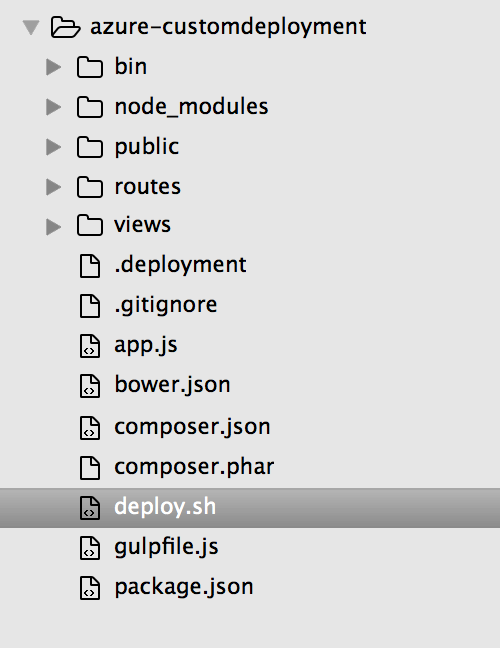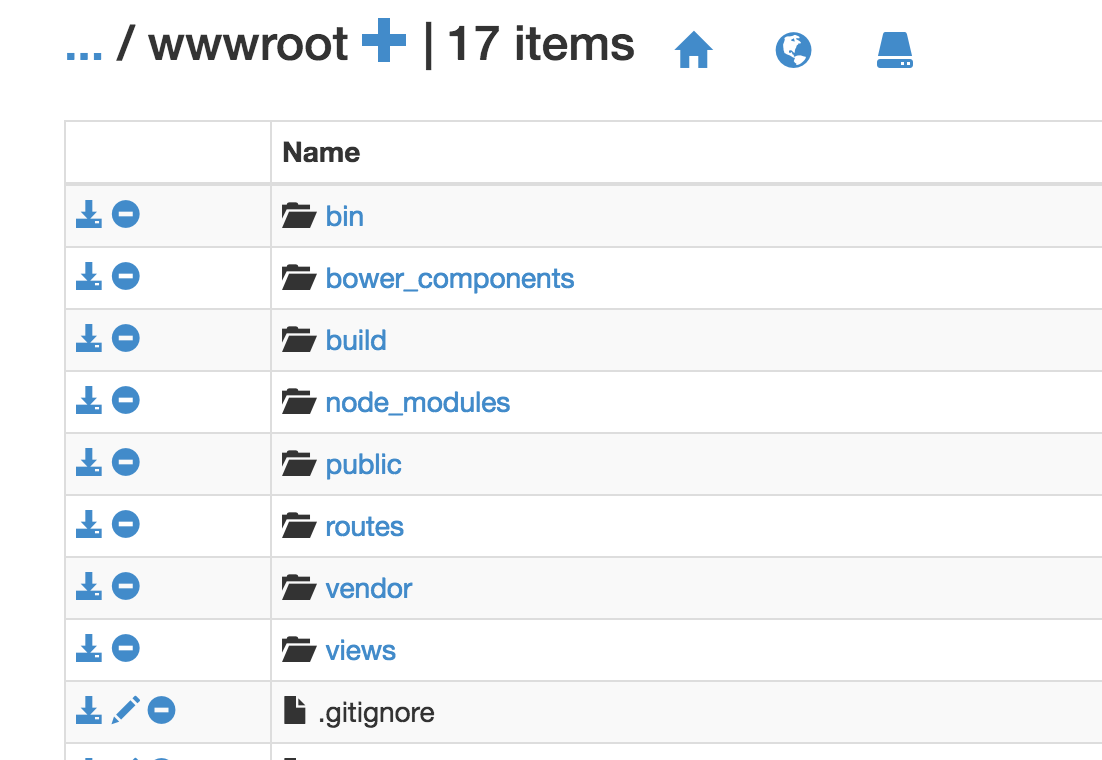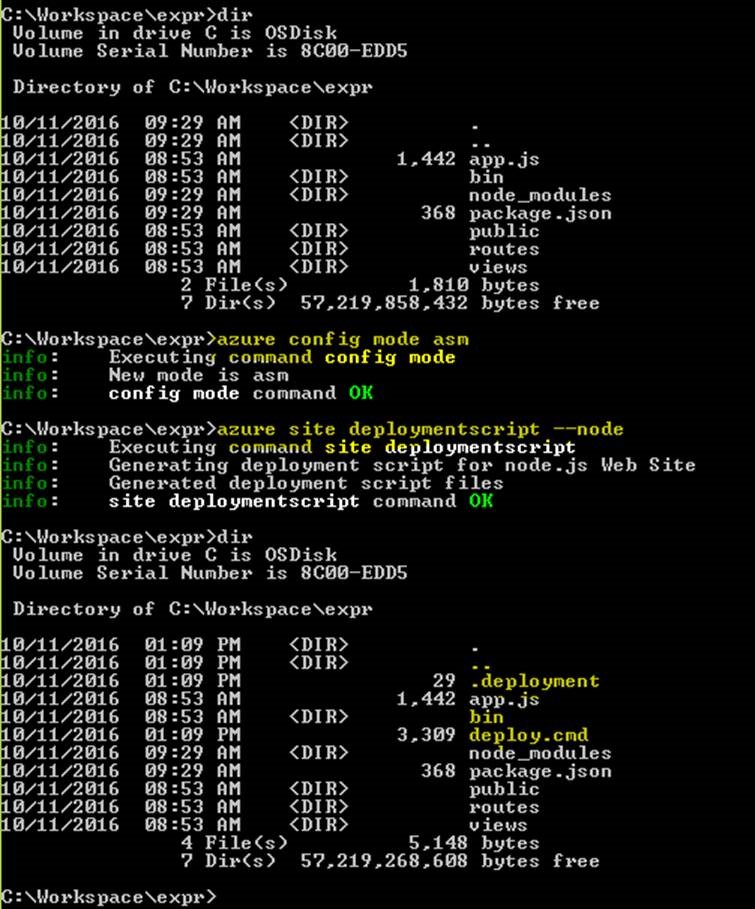Run NPM, Bower, Composer, Gulp & Grunt In Azure App Services During Deployment
Azure Source Control deployment process would involve below steps
- Moves content to azure web app
- Creates default deployment script, if there is no .deployment file in web app root folder
- Run’s deployment script. In case of a nodejs app it would do
npm installhere
At Step 2, Instead of deployment process creating a default script. We can include custom deployment script and change it’s content to
- Install modules listed in package.json file.
- Install modules listed in bower.json file
- Install modules listed in composer.json file
- Run Gulp Tasks
- Run Grunt Tasks
- Unzip files
You can find a Sample Nodejs project with above operations @ GitHub Link
Below steps would help you generate custom deployment script :
- Install the azure-cli tool, it’ll also give you some cool features on managing azure related resources directly from the command-line:
npm install azure-cli -g
- Go to the root of your repository (from which you deploy your site).
- Run the custom deployment script generator command: (i have used –node option but you can choose others)
azure site deploymentscript --node
- Above command will generate the files required to deploy your site, mainly:
.deployment - Contains the command to run for deploying your site.
deploy.cmd - Contains the deployment script.
On Mac/Linux, It would create deploy.sh. Difference being content in .deployment file calling deploy.sh instead of deploy.cmd

Modify your deploy.cmd/deploy.sh file based on your requirement with below content.
Link for Sample deploy.sh file at Github with below modifications
####1. Install modules listed in package.json file.
# 3. Install NPM packages
if [ -e "$DEPLOYMENT_TARGET/package.json" ]; then
cd "$DEPLOYMENT_TARGET"
eval $NPM_CMD install --production
exitWithMessageOnError "npm failed"
cd - > /dev/null
fi
####2. Install modules listed in bower.json file.
- Make sure you have bower listed in package.json file
Here’s the code:
# 4. Install Bower modules
if [ -e "$DEPLOYMENT_TARGET/bower.json" ]; then
cd "$DEPLOYMENT_TARGET"
eval ./node_modules/.bin/bower install
exitWithMessageOnError "bower failed"
cd - > /dev/null
fi
####3. Install modules listed in composer.json file.
- Download composer.phar and include it in root folder
Here’s the code:
# 5. Install Composer modules
if [ -e "$DEPLOYMENT_TARGET/composer.json" ]; then
cd "$DEPLOYMENT_TARGET"
eval php composer.phar install
exitWithMessageOnError "composer failed"
cd - > /dev/null
fi
####4. Run Gulp
- Make sure you have gulp listed in package.json file
Here’s the code:
# 6. Run Gulp Task
if [ -e "$DEPLOYMENT_TARGET/gulpfile.js" ]; then
cd "$DEPLOYMENT_TARGET"
eval ./node_modules/.bin/gulp imagemin
exitWithMessageOnError "gulp failed"
cd - > /dev/null
fi
####5. Run Grunt
- Make sure you have grunt listed in package.json file
Here’s the code:
# 7. Run Grunt Task
if [ -e "$DEPLOYMENT_TARGET/Gruntfile.js" ]; then
cd "$DEPLOYMENT_TARGET"
eval ./node_modules/.bin/grunt
exitWithMessageOnError "Grunt failed"
cd - > /dev/null
fi
####6. Unzip Files
#7. Unzip file
cd "$DEPLOYMENT_TARGET"
eval unzip -o Archive.zip
cd - > /dev/null
Final Output
As you can see in below screenshot, After deployment it has created
- bower_components(Bower output)
- node_modules(NPM output)
- vendor(Composer Output)
- build(output of image-min task in gulp)

You can find a Sample Nodejs project with above operations @ GitHub Link
Troubleshoot
- If deployment fails, check for View log in Azure Portal as below image
- Navigate to Azure portal
- click on your app
- Click on Deployment Options
- Select your recent deployment
- Click on View log for Running Deployment Script.
####Azure Site command is not working If you fail to generate deployment script using azure cli. please make sure you are in asm mode.
azure config mode asm

